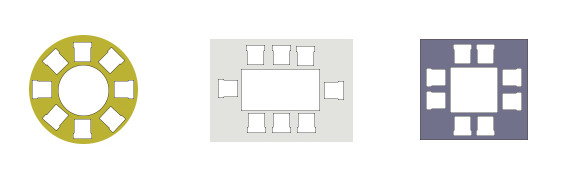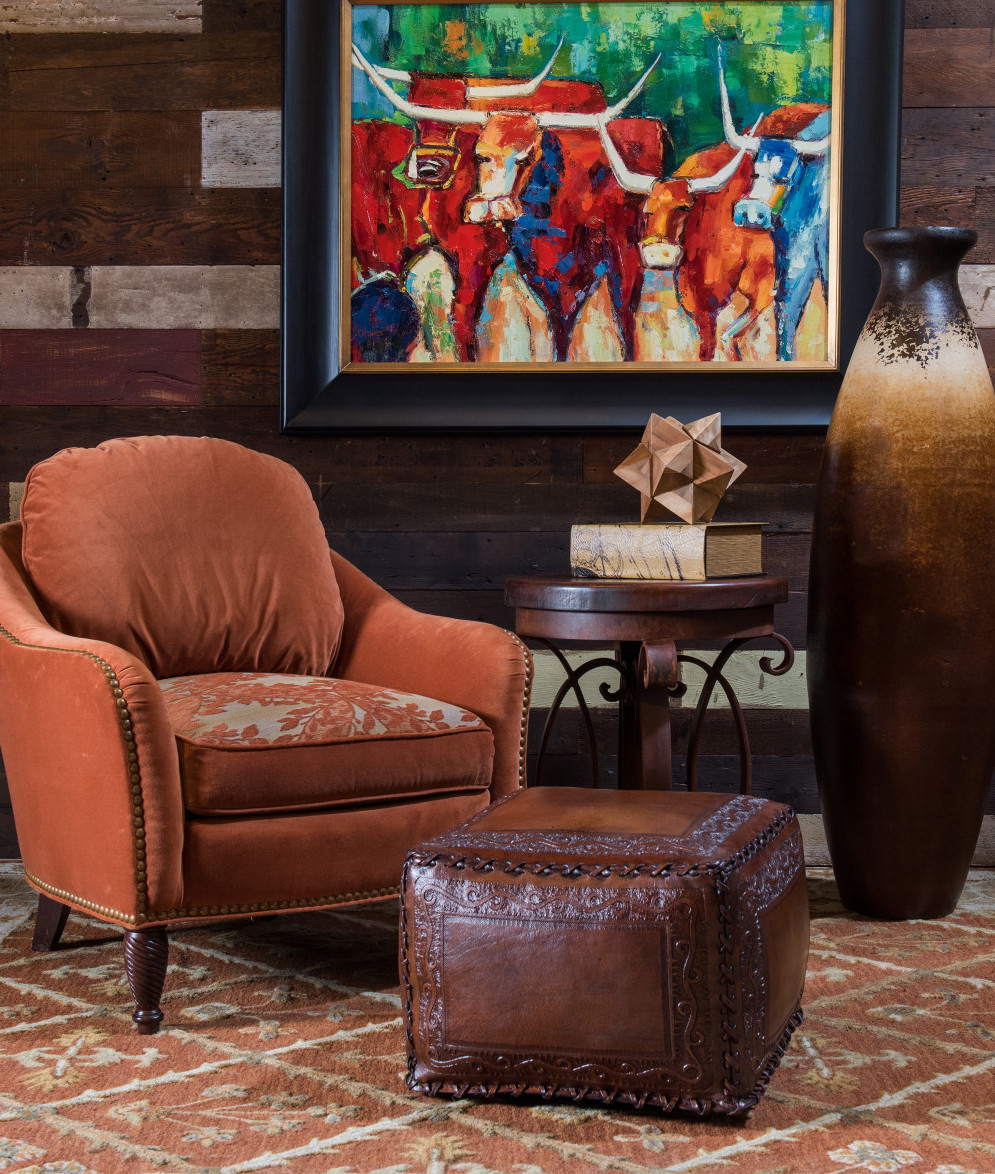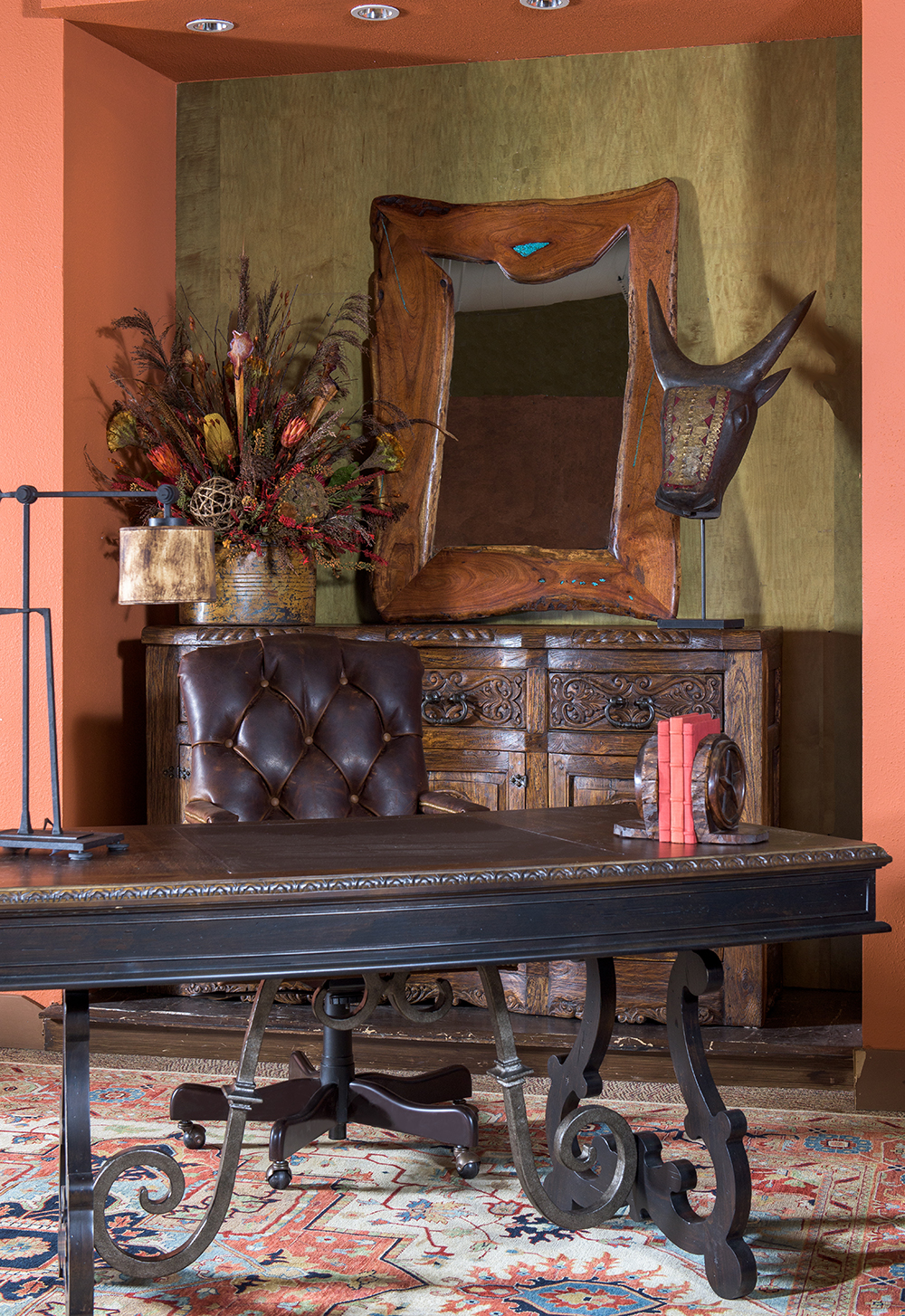We’ve put together a guide for choosing the right area rug for your space. A great area rug will do more to a space than just add color, pattern, or texture. It helps to ground furniture and define a space as a cohesive area. It also protects your floor, absorbs sound, and provides great comfort to walk on.
1. SIZE
The size of a rug needed is determined by the dimensions of the room, the furniture placed in it, the actual function of the room, and your style.
LIVING ROOM:
In a living room, a rug should be centered under your coffee table and chosen with the furniture arrangement in mind. Living room seating can be positioned in a number of ways: with four legs on the rug, with four legs off of the rug, or with only the front two legs on the rug. Good design dictates a uniform choice, so if only the front legs of your sofa rest on the area rug, the same should go for the armchair, too. Typically, living area rugs are 5 x 8, 8 x 10, or 9 x 12 feet. If you are unsure what size to choose, go larger. The rug should be large enough to accommodate all four legs of the table and approximately the same length and width of the furnishings in the space. To accent the furnishings most effectively, leave some flooring between the area rug and the furniture exposed.

DINING ROOM:
Choose a rug that’s larger than the size of your table. Measure the length and width of the table, then add at least 4 feet to each measurement. Most dining room tables need an 8-foot wide area rug. The chair legs shouldn’t fall off the rug when people are seated at the table or pulling the chairs away from the table to seat themselves.

BEDROOM:
Choose an area rug that is 18 – 24 inches larger than the sides of the bed to give yourself a soft surface to land on. If you have nightstands, measure the distance from the outer edge of both nightstands to use as the width for your guide. When determining the length of the rug, account for furniture at the foot of the bed; all legs should either fit on or off the rug.

2. WEAVES
The weave of the rug determines how it feels, how it wears over time, and how it looks. These are the most common rug weaves.

HAND-KNOTTED
This is the most time-consuming, labor-intensive way to produce a rug. To create the pile, individual yarns are knotted around pairs of warp yarns that run the length of the rug. In general, the more knots per square inch, the more durable and valuable the rug is. There are basically two kinds of knots that can be used: Persian and Turkish. The Persian knot is asymmetric and open to either the right or the left. The Turkish knot is symmetric.
TUFTED
This weave can be produced by hand or by machine. Loops of yarn are pulled through a backing material then sheared to create a smooth, cut-pile surface. Another layer of cloth is added to the back of the rug to hold the loops in place. High/low rugs combine tufting and loops to create further dimensional effects. These rugs are a budget-friendly alternative and come in a variety of styles; but take note: tufted rugs are prone to shedding and may require regular vacuuming.
HOOKED
As with a tufted rug, yarns are pulled through a backing, then another layer of cloth is added to the back to hold the loops in place. Unlike a tufted rug, the pile is left looped rather than cut. Hooked rugs are less prone to shedding than tufted styles.
FLATWEAVE
These are rugs without pile or knots. Flatweave rugs are made on a loom and threaded through the warps. They come in a variety of materials (wool, cotton, and synthetics are common) and are very durable, but they don’t come on any sort of backing, so a rug pad is highly recommended. Since they are reversible, they work especially well in high-traffic areas like entryways and playrooms.
3. MATERIALS
Rug materials offer different levels of softness, stain resistance, durability, and price.

WOOL
Long the choice of rug makers, wool stands up well to traffic, provides a soft cushion underfoot, and, over time, takes on a patina that adds to the character of a room. Wool is usually a thicker rug but can also be a flatweave. Look for New Zealand wool or wool from sheep raised in high altitudes for the strongest fibers. They are however prone to shedding and must be professionally cleaned. Wool rugs also have good heat retention and insulation properties.
COTTON
Cotton rugs are often flatweaves or braided, and because cotton dyes easily, these rugs are available in a wide range of colors. It’s a softer, though less durable, alternative to seagrass, jute, and sisal rugs. Cotton rugs are versatile, low-maintenance, and easy to clean. It is also often machine-washable, so they make a great choice for the kitchen.
SILK
Silk is typically used in combination with wool. Their sheen adds highlights to the rug and gives definition to the design. Silk rugs are a luxurious choice, offering softness that makes them perfect for the bedroom. Silk rugs are more delicate than wool and cotton versions, sensitive to moisture, and generally more expensive than other materials.
NATURAL FIBERS
Natural-fiber rugs are created from materials like jute, sisal, bamboo and sea grass and create tough, durable floor coverings. Jute is softer and sisal is the strongest. None will be as soft as wool or cotton, but their distinctive textures and large-scale weaves add interest that wool and cotton can’t always achieve. Natural fibers are eco-friendly and among the most affordable for rug construction. They work best in dry rooms where there is low likelihood they will be stained, as they can be difficult to clean.
SYNTHETICS
Polypropylene and other synthetic fibers are often used to make indoor/outdoor rugs. Polypropylene is a stain-resistant fiber that repels water, making it the perfect choice for outdoor rugs. Easy care and resistance to fading make them an ideal choice for functional areas like entryways, hallways, or patios.
4. CARE
Regardless of what rug you come home with, we suggest following a few important care guidelines to ensure your purchase lasts.

ROTATION
Once a year, turn your rug 180 degrees. This will help prevent certain spots from fading or wearing more than others.
VACUUMING
Vacuums will easily remove dirt and dust from a rug, but they can just as easily loosen or tear rug fibers. To preserve your area rug, use vacuum attachments, which are gentler, especially around the binding or serging at the rug’s outer edges. For the first few months after you set down a new rug, some shedding is normal.
CLEANING
A rug will warrant a professional cleaning once every one to two years. In between, spot cleaning is the best way to minimize stains. Remove spills as quickly as possible by blotting them up with a dry white cloth on both sides. Place a towel under the spot to protect the floor and rug pad, and use absorbent towels or a non-shedding sponge rather than a brush. Don’t scrub the pile; sponge it in the direction of the nap. Once the stain is removed, sponge the area with cool, clean water to finish.
RUG PADS
This will keep your rug properly positioned and prevent sliding and wrinkling, but it will also reduce wear and tear, help absorb impact, and make vacuuming easier.